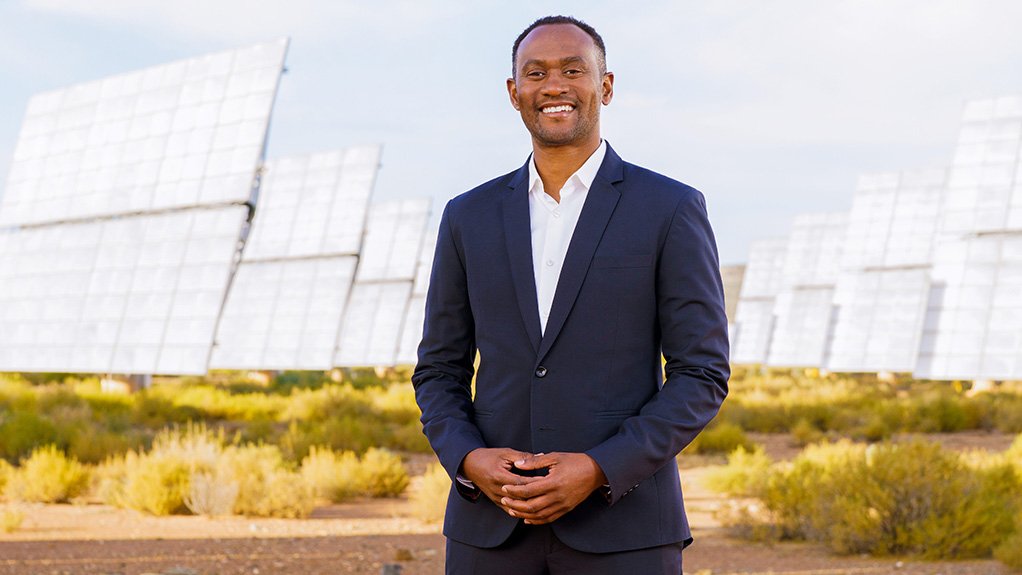Pele Green Energy looking beyond R2.5bn funding innovation as it hastens towards ‘South African IPP’ vision
Following its recent success in securing new public and private power purchase agreements, Pele Green Energy (PGE) is already having to consider additional funding options beyond the pioneering R2.5-billion Sithala facility concluded in November with Nedbank, Norfund and the Industrial Development Corporation.
The facility has, for the first time, provided the black-owned independent power producer (IPP) with a consolidated funding platform designed to enable a competitive expansion in its operating portfolio from about 1 GW to 5 GW by 2027, as well as the capital needed to develop a project pipeline. It has also enabled PGE to refinance its existing group funding with a platform facility at the holding company level.
MD Gqi Raoleka tells Engineering News that the innovative funding structure represents a material advance on PGE’s previous capital-raising frameworks, which involved raising funds on a project-by-project basis.
This earlier model, he says, was not only onerous and time consuming but also uncompetitively priced, particularly for an entity seeking to evolve into a lead developer of projects that it both owns and operates.
Raoleka insists that PGE continues to value its partnerships with leading European, and Middle Eastern IPPs and credits South Africa’s black economic-empowerment policies for enabling such partnerships.
However, 15 years after its founding by a group of young black professionals, PGE is now intent on continuing its evolution from its initial position of junior partner to that of either co-sponsor or majority owner.
CFO Matthew Wainwright says the Sithala structure is aligned with that ambition and has already enabled it to play a more assertive and competitive role in recent projects.
PGE has, for instance, taken “near pari-passu” equity positions alongside ENGIE in two solar photovoltaic projects awarded under the fifth bid window of government’s renewables procurement programme, namely the 75 MW apiece Grootspruit and Graspan projects, which achieved financial close in late 2023.
In addition, the facility has enabled PGE to secure a 20% equity position in each of the three Koruson 2 cluster of wind and solar projects being built by Envusa Energy, which is jointly owned by Anglo American and EDF Renewables. The projects have a combined capacity of 520 MW.
Raoleka is also optimistic that Sithala will enable it to conclude its first PGE-led projects in the coming months with a private offtaker, which would represent a “major milestone” for the entity.
“This groundbreaking facility provides PGE with a significant capital base that has been structured to align our long-term interests with our partners and enables PGE to play a meaningful role in the delivery of the energy transition as a fully-fledged South African IPP,” Wainwright explains.
The size of these recent successes, however, has resulted in drawdowns against the facility that are well in advance of initial expectations and Raoleka indicates that PGE is about two years ahead of its goals.
There is, thus, a strong likelihood that Sithala will have to be enlarged to match the scale of public and private opportunities that are arising across various technologies; a scenario catered for under the arrangement.
Ultimately, though, even this scalable funding solution is likely to fall short as PGE moves to accelerate towards its stated goal of being a fully-fledged South African IPP.
“I stress South African, as we will need about R1-billion a year to sustain our growth, and that will require participation in capital markets that is broader than our current black shareholders and the building of a truly South African company.
“Alternatively, we would have to curtail our growth, which is not what we desire nor is it what the country requires,” Raoleka concludes.
Comments
Press Office
Announcements
What's On
Subscribe to improve your user experience...
Option 1 (equivalent of R125 a month):
Receive a weekly copy of Creamer Media's Engineering News & Mining Weekly magazine
(print copy for those in South Africa and e-magazine for those outside of South Africa)
Receive daily email newsletters
Access to full search results
Access archive of magazine back copies
Access to Projects in Progress
Access to ONE Research Report of your choice in PDF format
Option 2 (equivalent of R375 a month):
All benefits from Option 1
PLUS
Access to Creamer Media's Research Channel Africa for ALL Research Reports, in PDF format, on various industrial and mining sectors
including Electricity; Water; Energy Transition; Hydrogen; Roads, Rail and Ports; Coal; Gold; Platinum; Battery Metals; etc.
Already a subscriber?
Forgotten your password?
Receive weekly copy of Creamer Media's Engineering News & Mining Weekly magazine (print copy for those in South Africa and e-magazine for those outside of South Africa)
➕
Recieve daily email newsletters
➕
Access to full search results
➕
Access archive of magazine back copies
➕
Access to Projects in Progress
➕
Access to ONE Research Report of your choice in PDF format
RESEARCH CHANNEL AFRICA
R4500 (equivalent of R375 a month)
SUBSCRIBEAll benefits from Option 1
➕
Access to Creamer Media's Research Channel Africa for ALL Research Reports on various industrial and mining sectors, in PDF format, including on:
Electricity
➕
Water
➕
Energy Transition
➕
Hydrogen
➕
Roads, Rail and Ports
➕
Coal
➕
Gold
➕
Platinum
➕
Battery Metals
➕
etc.
Receive all benefits from Option 1 or Option 2 delivered to numerous people at your company
➕
Multiple User names and Passwords for simultaneous log-ins
➕
Intranet integration access to all in your organisation





















